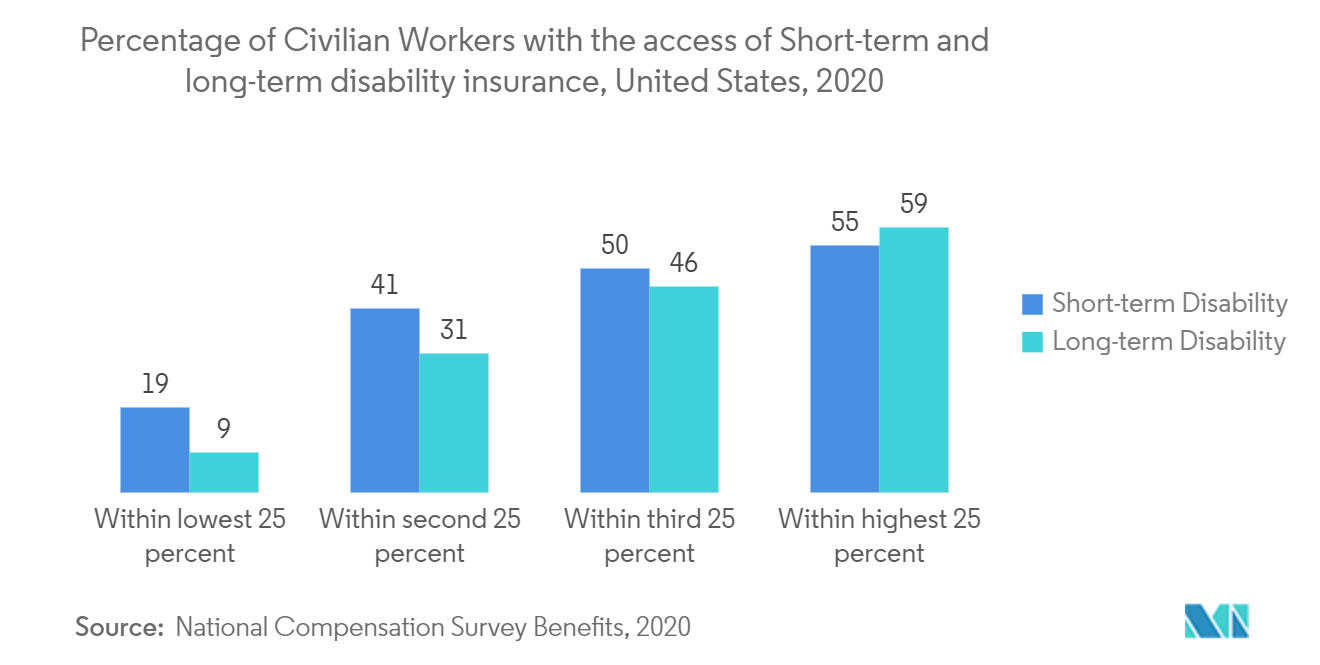Market Trends of Global Exoskeleton Industry
This section covers the major market trends shaping the Exoskeleton Market according to our research experts:
The Mobile Segment is Expected to Hold the Largest Share by Product Type Over the Forecast Period
The user wears rehabilitation medical exoskeletons temporarily to improve performance. Therefore, the user no longer uses this exoskeleton following a supervised training regimen. A rehabilitation exoskeleton must be adjustable and must execute the exact motion many times and log the information for each patient. It is used by a patient in 1- to 2-hour sessions, mainly those with lower limb movement disorders. After using the rehabilitation devices, the patient starts to walk properly. The major factors fueling the segment's growth are the increasing prevalence of disability and the implementation of strategic initiatives by the market players.
As per an article titled 'A Review on Lower Limb Rehabilitation Exoskeleton Robots', published in 2019, China had the highest stroke rate globally. There were nearly 15 million disabled people with lower limb motor dysfunctions, such as cerebral palsy, hemiplegia, and paraplegia, and nearly 40 million disabled older adults had lost the ability to walk due to aging. Therefore, lower limb rehabilitation robots are of great significance in China. The use of rehabilitation robots can reduce the burden on therapists, realize data detection during training, and aid the quantitative evaluation of recovery in a controllable and repeatable manner. Several market players are contributing to the market's growth. For instance, in March 2021, Astrek Innovations, a healthcare start-up working with rehabilitation and assistive robotics, announced that it is in the last stages of product development and planned to begin user trials in the second quarter of 2021. The product development is accelerated by the Gurugram-based accelerator, Huddle. Astrek's Unik Exosuit range is a motorized wearable robot that can help people with lower limb disabilities in gait training and performing exercises.
Hence, the factors mentioned above are expected to drive the market's growth during the forecast period.

North America is Expected to Hold a Significant Market Share Over the Forecast Period
The key factors responsible for the large share of the North American market include the high purchasing power of patients, the growing geriatric population, and the public and private organizations offering grants and funds for the development of technologically advanced products.
According to the SCI Data Sheet from the National SCI Statistical Center (NSCISC), 2020, around 17,810 new spinal cord injuries are recorded each year in the United States, among which males account for about 78% of new spinal cord injury (SCI) cases. Approximately 294,000 people with SCI live in the United States. The current average age at the time of injury is 43 years old. Lengths of stay in the hospital acute care unit declined to 11 days (about one and a half weeks), and lengths of stay in rehabilitation declined to 31 days (about one month). Similarly, according to a September 2020 update by the Centers for Disease Control and Prevention (CDC), 26% of adults in the United States had some type of disability. Thus, due to these statistics, several market players are engaged in the implementation of strategic initiatives.
The increasing R&D is driving the market's growth. For instance, as per an August 2020 update by the National Institute of Standards and Technology (NIST), to help manufacturers and consumers mitigate the risks associated with exoskeletons, researchers at the National Institute of Standards and Technology developed a new measurement method to test whether an exoskeleton and the person wearing it are moving smoothly. Product launches are another reason for the market's growth. For instance, in March 2021, Ekso Bionics partnered with the US Physiatry to educate physicians on the clinical benefits of an EksoNR exoskeleton. The partnership will help raise awareness of the Ekso Bionics technology among physicians and other rehabilitation therapists. It will also teach them how to successfully integrate robotics into rehabilitation programs.
Thus, such factors are expected to boost the market's growth significantly over the forecast period.


